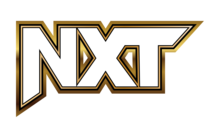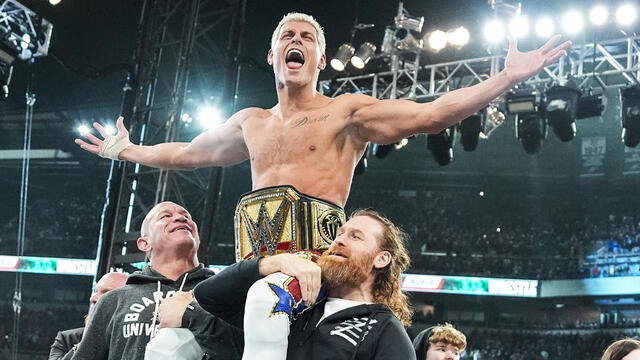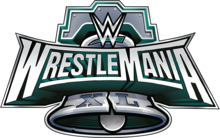
Elitist vs. The Common Man: Archetypes Collide at Money in the Bank
World Heavyweight Champion Sheamus vs. Alberto Del Rio
Always the heart and the soul of our country will be the heart and the soul of the common man … — Franklin D. Roosevelt
It’s a tale as old as time: The oppressed villagers of the kingdom rising up against the unjust king; the hardworking stiff just trying to get through the day despite an overbearing boss; the blue collar struggle of everyday living contrasted with white collar luxuries.
In short, it’s the common man versus the elitist; an archetypal rivalry that will once again play out in front of the WWE Universe when World Heavyweight Champion Sheamus squares off against Alberto Del Rio with The Great White’s illustrious title on the line at Money in the Bank.
The disparity between the two competitors is striking: Sheamus epitomizes the very essence of "the everyman" in his nose-to-the-grindstone approach to his trade. The Mexican Aristocrat, on the other hand, rides into arenas the world over in cars worth more than the majority of fans make in an entire year ... or ever.
While Del Rio unquestionably possesses exceptional in-ring ability, there’s just nothing in his persona that the WWE Universe can relate to, a notion that Del Rio wears as a badge of honor. As an example of his lofty demeanor, on the June 1 episode of SmackDown, the Aristocratic Superstar chided Sheamus for being a "hooligan" who is somehow unworthy of the title that adorns his waist.
For his part, it is a moniker The Celtic Warrior not only doesn’t mind, he embraces it, wearing it on his shirt as his own badge of honor.
As striking as the personal differences are between Sheamus and Del Rio, though, their in-ring styles are just as disparate. The Great White brings a power game to the squared circle, whereas The Mexican Aristocrat is very much a finesse grappler.
When the two Superstars clash at Money in the Bank for the World Heavyweight Championship, these opposing worlds will collide. Sheamus will bring his "hooligan" approach to the battle, whereas Del Rio — brandishing the silver spoon he was born with — will bring a measured attack against The Celtic Warrior’s broadsword-like assault.
Despite the importance of the looming pay-per-view showdown, theirs is not the first such clash of cultures in WWE history — not by a long shot. There have been many Superstars who share Del Rio’s haughty views, including one who may surprise you ...
Mankind vs. Hunter Hearst Helmsley
If your nose is up in the air, you cannot see where you are going. — Mason Cooley
Today he may be recognized as one of the greatest competitors in the history of the ring, but when he first arrived in WWE, Triple H was known as Hunter Hearst Helmsley, a wealthy snob from Greenwich, Conn., whose lifestyle outside the ring was as refined as his style was inside the ring.
Arriving to arenas adorned with flowing, bejeweled robes, Helmsley wasn’t exactly well received by the WWE Universe. Still, early on in his career, the would-be legend was embroiled in high-profile rivalries with "lowly" opponents, most famously the enigmatic Mankind.
Never was the divide greater between privileged society and the common man than when the elegantly dressed Helmsley, known to bow gracefully (and obnoxiously) before his matches began, clashed with the Hardcore Legend, who lumbered his way to the ring adorned in his trademark brown rags and crazed persona. As if aristocracy wasn’t already the furthest descriptor from your mind when thinking of Mankind, after Helmsley defeated the Superstar to win the King of the Ring in 1997, the divide between the two was never greater in their clash of cultures.
As the intense rivalry between the "king" and the "commoner" raged on, the two diametrically opposed Superstars engaged in a vicious feud that saw both competitors score big victories. Refined as he was, Helmsley showed signs of what was to come as he matched Mankind’s willingness to fight tooth and nail. What played out was one of the Attitude Era’s most notorious series of battles.
As epic as those matches may have been, though, another Attitude Era dispute between an elitist and a blue collar butt kicker was taking the WWE Universe — and pop culture — by storm.
"Stone Cold" Steve Austin vs. Mr. McMahon
Show me an elitist, and I'll show you a loser. — Tom Clancy
Everyone wants to stick it to their boss, and in the late 1990s in the early days of the fabled Attitude Era, WWE Universe members from all walks of life were able to vicariously do just that through the actions of "Stone Cold" Steve Austin. During his legendary rivalry with the ultimate embodiment of the bad guy boss, Mr. McMahon, The Texas Rattlesnake unleashed all the inner frustrations that came with working for the overbearing Chairman.
In a series of unforgettable exchanges, the heated clash between a disgruntled employee and his corporate overlord played out in front of the world and became the watershed rivalry of an era, defining one of the most beloved periods in WWE history.
"Stone Cold" was blue collar through and through; a hard-working, beer-drinking, take-no-crap workhorse in the ring who made his bones by not trusting anyone — least of all his billion-dollar boss, Mr. McMahon. Plus, though you’d never want to go toe-to-toe with him inside the squared circle, Austin was the kind of guy you’d want to hang out with, a quality he certainly didn’t share with Mr. McMahon.
The Chairman was pretty much the polar opposite of his foul-mouthed foil; decked out in $5,000 suits and driving around in the finest automobiles money could buy, the head of WWE was the very picture of corporate power.
What began with a Stunner heard 'round the world to his boss on the Sept. 22, 1997, edition of Monday Night Raw, would soon escalate as Austin’s war against Mr. McMahon was officially launched. As he would find out, though, it’s one thing to stick it to "The Man;" it’s quite another to stick it to Mr. McMahon.
The battle raged back and forth for years, with either foe gaining the upper hand at various stages, creating one of the greatest rivalries in WWE history. But it was Austin who struck most often, and with greatest effect. The WWE Universe will never forget the sound made by a bed pan, clanging off The Chairman’s head in a hospital bed. Nor will they forget the image of one of Mr. McMahon’s prized Corvettes being obliterated thanks to a "Stone Cold"-driven cement truck, or the sight of The Chairman, sprawled out inside the ring as Austin soaked his boss in an incident that has become known simply as "the beer bath" in WWE lore.
As diametrically opposed as Austin and McMahon were, however, there’s another rivalry that captures the very essence of elitism vs. the common man ...
"The American Dream" vs. "The Million Dollar Man"
Ain't no man can avoid being born average, but there ain't no man got to be common. — Satchel Paige
When "The Million Dollar Man" took on the "Son of a Plumber" in the early 1990s, what resulted was the very essence of the rich man/poor man struggle.
Ted DiBiase, legendary in WWE for his playboy lifestyle, flaunted his wealth like no one else in squared circle history. Flying his own 747 to live events, DiBiase was so rich that he purchased his very own title. The Million Dollar Championship was a solid gold, diamond-laced piece of hardware that helped define DiBiase’s career.
An iconic scene that personified 1980s excess, DiBiase was regularly spotted peeling off $100 bills and sticking them in the mouths of felled opponents. In another example of his everyday extravagance, DiBiase, with bodyguard Virgil in tow, memorably visited a public pool to take a swim. When he arrived to find the pool packed with kids, however, he started throwing around the green and quickly made a public pool private.
By the early '90s, not much had changed in DiBiase’s demeanor, and when he began a memorable dust-up with the incomparable Dusty Rhodes, "The Million Dollar Man" was humbled by a proud man from modest beginnings.
"The American Dream" was everything “The Million Dollar Man” was not — Rhodes was born and raised in a poor area of Austin, Texas, his family was blue collar to the bone and he was not gifted with a body typical of the biggest stars of his era.
But it was these very qualities that drew WWE fans to Dusty like moths to a flame — his charismatic personality and singer’s delivery made him a must-see attraction. And in 1985, when Rhodes was embroiled in a classic rivalry with Ric Flair, "The American Dream" memorably talked about what it was really like for Americans facing hard times. He talked about the struggles of unemployed textile and auto workers, a missive that resonated deeply with the American working class.
"The Million Dollar Man" must not have been listening, though, as just five years later, DiBiase told Rhodes that, "You’ll be chasing my money, just like every other common man." Dusty wouldn’t bite, though, and their conflict eventually turned so personal that it became a family affair. Rhodes brought in his son, Dustin, to help him against DiBiase and Virgil, showing there were more important things in life than money.
"The American Dream" never forgot where he came from, and so was never tempted by "The Million Dollar Man’s" credo that everyone had a price.
Now, as Sheamus and Alberto Del Rio prepare to finally clash inside the ring at Money in the Bank, they will be added to a long list of similar rivalries in WWE lore. But will championship gold adorn the common man’s waist, or will it be added to the already extravagant collection of an elitist? Tune in to Money in the Bank, Sunday July 15 at 8 ET/5 PT only on pay-per-view!
WWE Shows Latest Results
Raw results, April 15, 2024: Chad Gable viciously attacks Sami Zayn after losing to Zayn in Intercontinental Title Match!
Full ResultsSmackDown results, April 12, 2024: LA Knight and AJ Styles earn victories for a chance to challenge Cody Rhodes at WWE Backlash!
Full ResultsWWE NXT results, April 16, 2024: Trick Williams defeats Carmelo Hayes in a Steel Cage Match
Full Results













